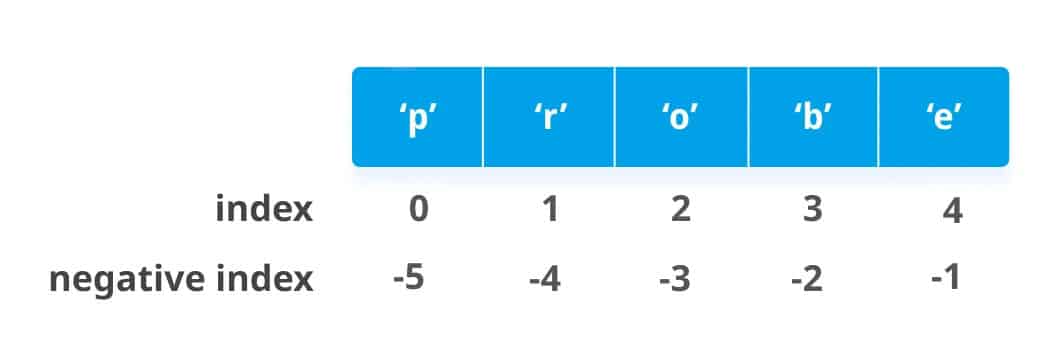In the Python language, slicing allows you to access specific parts of your code. This technique is extensively used in Data Science and Machine Learning, especially with NumPy and Pandas. Dive into the world of slicing, learn what it is, and master its application in your Python endeavors.
Python is an immensely popular programming language worldwide. It is utilized for various purposes, including web and GUI application development, task automation, Data Science, and Machine Learning.
Python is a general-purpose language, which means it can be employed to create a wide range of programs and isn’t specialized in a specific problem domain. Its versatility and simplicity are the primary reasons behind its widespread success and massive adoption. It ranks as the second most used language among developers.
Python is used not only for web development but also for data analysis and visualization. In the field of Data Science, this language enables analysts and other professionals to perform complex statistical calculations, create data visualizations, build Machine Learning algorithms, and analyze and manipulate data.
Python offers the capability to create various types of data visualizations, including charts, graphs, and even 3D plots. There are also numerous libraries that allow developers to write data analysis and Machine Learning programs more quickly and efficiently, such as TensorFlow and Keras.
This language is ideal for rapid application development, thanks to its dynamic typing and binding options. Another strong point of Python is its slicing capabilities.
What is an index?
An index is a position of an individual character or element in a list, tuple, or string. The index value always starts at zero and ends one less than the number of elements.
Negative indices allow users to index a list, tuple, or any other indexable container from the end of the container rather than from the beginning.

What is Python slicing?
Python Slicing is the extraction of a portion of a string, list, or tuple. It allows users to access a specific range of elements by specifying their indices.
The slicing feature is used to access a part of a sequence, making code cleaner, more concise, and more readable. Slicing can be used to view, modify, or remove mutable elements from a sequence.
The “Start” and “Stop” syntaxes are used to specify the beginning and end of a slice, allowing you to retrieve certain elements. Negative slicing starts from the end of the list.
It’s also possible to retrieve certain elements with a specific step. A negative step can be used to reverse the elements of a data structure.
The `slice()` function allows users to extract a section of data and return it as new data without modifying the original data. This allows users to take a specific portion of elements without altering them.
Slicing also enables the insertion of elements into a list without replacing other elements. Conversely, the “del” statement is used to delete multiple elements from a data structure. Note that the deletion of elements is not supported by tuple objects.
Python Slicing and Data Science
Python Slicing is extensively used in the fields of Machine Learning and Data Science, particularly with the NumPy and Pandas libraries.
NumPy is a fundamental package for scientific computing in Python. Slicing is employed with NumPy arrays, which are grids of values of the same type indexed by a tuple. You can perform slicing on one-dimensional arrays, two-dimensional arrays, three-dimensional arrays, and more.
Pandas is an open-source Python package used for data analysis and Machine Learning, built on top of NumPy. It’s one of the most popular Data Wrangling packages and is compatible with numerous other Python Data Science modules.
Slicing is used with Pandas DataFrames, which are two-dimensional, labeled data structures similar to a SQL table or a spreadsheet with columns and rows. Each column in a DataFrame can contain different types of data.

How do I learn to master Python?
In this article, we’ve discussed two essential concepts of the Python language: indexing and slicing. You now understand how slicing, negative slicing, and step indexing work.
These concepts are fundamental for understanding how Python operates. However, they represent just a small fraction of the possibilities this language offers.
To truly master Python in all its intricacies, you can choose DataScientest. Our training programs in various Data Science professions all include a module dedicated to programming in Python. You’ll learn the fundamentals of the language, as well as specialized libraries for Data Science like Pandas and NumPy.
Through our other modules, you’ll delve into Data Visualization, databases, Machine Learning, and Business Intelligence. By the end of your journey, you’ll be well-prepared to work as a Data Analyst, Data Scientist, Data Manager, or Data Engineer.
Our online training adopts a Blended Learning approach, combining platform-based learning with coaching and masterclasses. You can choose between the intensive bootcamp mode and the Continuous Training mode, depending on your preferences and availability.
Our institution is recognized by the state and eligible for financing options. Don’t wait any longer; discover DataScientest’s training programs!
You now have a comprehensive understanding of Python slicing. For more information, explore our complete guide on Python, as well as our guides on the NumPy and Pandas libraries.










